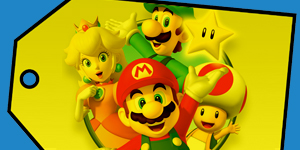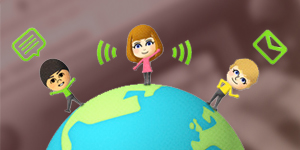Extra: Why The 2DS Is Actually A Good Idea

We’re all used to seeing Nintendo make bizarre decisions, but the newly revealed Nintendo 2DS – a 2D-only variant of the 3DS – takes the cake. And just so happens to resemble a slice of cake when viewed from the side, too. Yesterday morning’s announcement of the cheaper, flatter, and 2D-er handheld came seemingly out of nowhere and was immediately panned by gamers across the Internet for its missing features, perplexing design, and even its mere existence. The 2DS certainly seems odd at first glance, but if you look at the history of the 3DS, this 2D variant turns out to be a logical move on Nintendo’s part. It addresses a variety of issues that have stunted potential 3DS growth here in the West (where sales are half that of Japan even though our market is much larger), while also ensuring higher profits for Nintendo during a fiscal year in which they pledged to generate a lofty 100 billion yen profit. One could argue that in the same way many joked the Samsung Galaxy S3 was designed by the company’s legal team to prevent further lawsuits from Apple, Nintendo designed the 2DS specifically as a workaround for the issues the 3DS has faced.
In some ways, the biggest hindrance of the 3DS is its namesake: the stereoscopic 3D effect. It’s not an issue for everyone, but there are situations in which the mere existence of this feature has prevented system sales, most notably among parents of young children. Since before the launch of the 3DS, Nintendo has billed the 3D effect as a feature for ages 7 and up only. Even with the 3D Slider available as an option to let younger children turn off the effect, it’s hard to convince parents that it makes sense to spend $170 on a premium product centered around a feature their children shouldn’t even use. Addressing this is a clear part of Nintendo’s 2DS strategy. Nintendo of America President Reggie Fils-Aime said as much to IGN, telling the site that the 3D age requirement “creates an opportunity for five-year-olds, six-year-olds, that first-time handheld gaming consumer.” It’s a way for Nintendo to revisit its old blue ocean strategy, in which they focused on potential customers who were not addressed by previous products. Similarly, there are many out there who simply don’t trust the 3D effect. While Nintendo claims it’s perfectly safe, reports from the 3DS’s early days of headaches, nausea, and potential eye damage have scared away some would-be buyers. The 2DS completely avoids such issues, providing an option in which those who are hesitant about 3D do not feel like their money is being wasted on a feature they’ll never use.

The ability to provide a non-3D alternative to the 3DS is the publicly presented reason for the 2DS, but if you look at the device itself, it’s clear Nintendo is also trying to address the ongoing brand confusion between DS and 3DS. To this day, many people still think the 3DS is just another iteration of the DS. To them, there was the DS, the DS Lite, the DSi, and now a DS that can output in 3D called the 3DS. They don’t fully realize that the 3DS is actually an entirely separate system, much like many people do not yet understand that the Wii U is actually the successor of the Wii. Part of the DS/3DS brand confusion comes from the naming, but a lot of it can also be attributed to how similar the 3DS and 3DS XL look to their previous DS counterparts. They all feature a clamshell design, two screens, a stylus, and some sort of matte or gloss finish depending on which version you choose. The 2DS completely bucks this trend with its slate design. There’s no clamshell and the disproportionate screens – one of the few visual differentiators of the 3DS – are now front and center. If a kid asks his mom for a 3DS, it’s easy to see how she could reply with a comment like, “This looks just like your DSi, you don’t need it.” With the 2DS, however, it’s immediately distinguishable as a separate device.
Creating an entirely new design for the 3DS also allows for Nintendo to maximize the system’s profitability while offering a cheaper price point. Removing the 3D effect obviously cuts down on costs, but as Nintendo of America VP of sales and marketing Scott Moffitt told GamesIndustry International, “hinged clamshell design is also an issue” when assessing manufacturing costs. Take it away and you save even more. Plus, moving away from a clamshell design lets Nintendo remove the extra cost of two separate screens. As reported by USgamer, the 2DS contains a single, giant screen that is divided in two by the plastic casing. Similar cost cutting measures were applied to the speaker, which is now mono instead of stereo (although stereo and surround sound options are still available when headphones are plugged in). If the iPhone can get away with only one speaker, the 2DS can as well. All of this ensures that even when sold for less than its 3DS counterparts, the 2DS will still generate a healthy profit for Nintendo. A profit that is more crucial now than ever as Nintendo continues to recover from the 3DS’s weak initial sales, the ongoing Wii U sales struggle, and two years of annual operating losses.

Then there’s that cheaper price point. At $129.99, the 2DS is $40 cheaper than the 3DS and $70 cheaper than the 3DS XL and PlayStation Vita. It also allows for Nintendo to finally phase out the original Nintendo DS entirely. For the past few years, the DS Lite and DSi acted as budget gaming machines. They were priced at or below $129.99; a price that the DS Lite’s success proved is mass-market friendly across all types of consumers. While Nintendo was happy to continue selling hardware, even if it was the dated DS, they simply couldn’t generate as much money off DS software sales. Few DS titles still retail for full price, and many of the late DS buyers chose to purchase used games to save even more. By bringing the 2DS out at this same $129.99 price point, Nintendo is able to transition these consumers to the 3DS ecosystem, where games still cost $39.99 (even among older evergreen titles such as Mario Kart 7 and Super Mario 3D Land). In short, making the 2DS more affordable not only ensures better sales of the hardware, but also helps to build a larger user base that will continue to buy games well into the future. We will see this strategy in action with Pokemon X & Y, which will not coincidentally launch alongside the 2DS on October 12. Parents may have felt it was too expensive to get a 3DS just so their kids could play the new Pokemon, but with this proven price point, Nintendo is able to practically guarantee additional sales of both the games and the hardware needed to play them.
For everything Nintendo did right with the 2DS, it still isn’t perfect. One could argue that the clunky-looking design leans a little too heavily on the goal of attracting kids, especially in an era when sleek devices like iPod touches and iPads are being used by the exact same demographic. There’s also the 2DS name itself, which may result in the exact brand confusion that the system’s design specifically tried to avoid. When you examine the 2DS strategy as a whole, though, it’s clear that this is a system built to address the issues that have been holding back the 3DS. For gamers, the 3DS has been a great handheld with a huge selection of games. Now Nintendo needs to get those games into the hands of new customers, be it those who play only in 2D, parents who didn’t understand the original 3DS, or those who simply thought the price was too high. After all, there’s a reason Nintendo didn’t announce the 2DS in a fan-oriented Nintendo Direct and still has not tweeted about it with its @NintendoAmerica account a full 17 hours after the announcement (at the time of this writing). As Nintendo fans, we like to have our cake and eat it too, but the 2DS is a cake slice for someone else.



I completely agree with this. I couldn’t afford Nintendo 3DS so this was a great substitute for me. I also couldn’t care less about 3D effects so this was a no-brainer purchase for me. 🙂